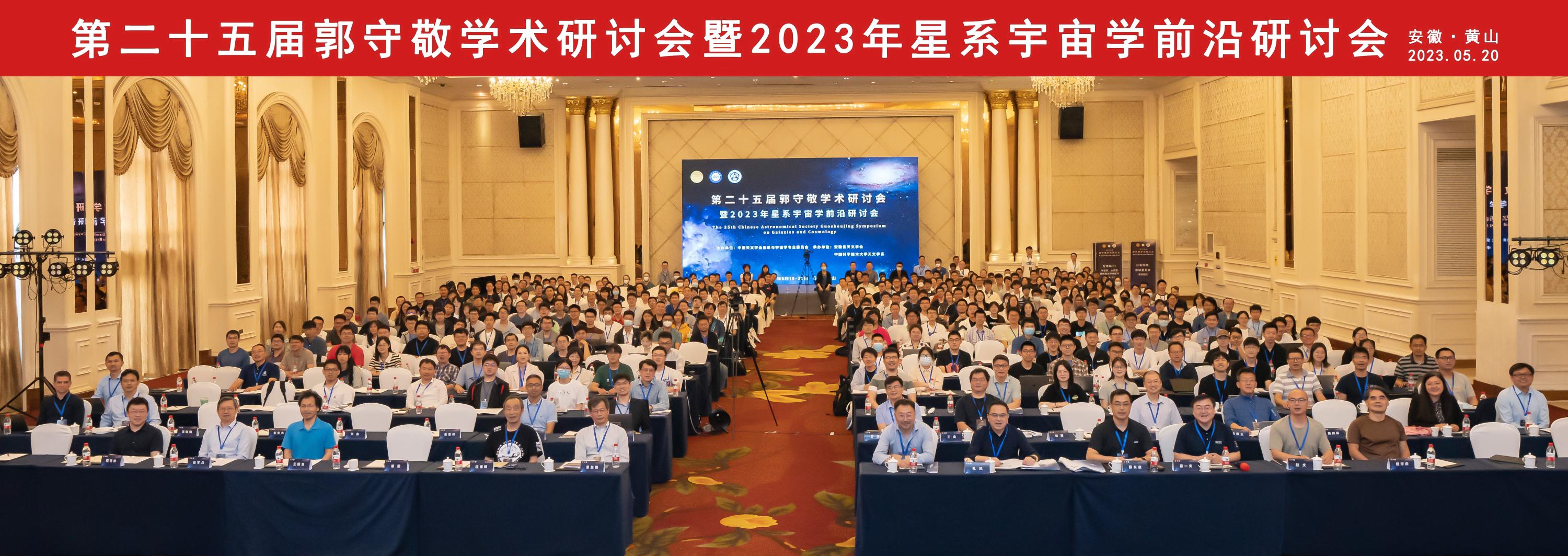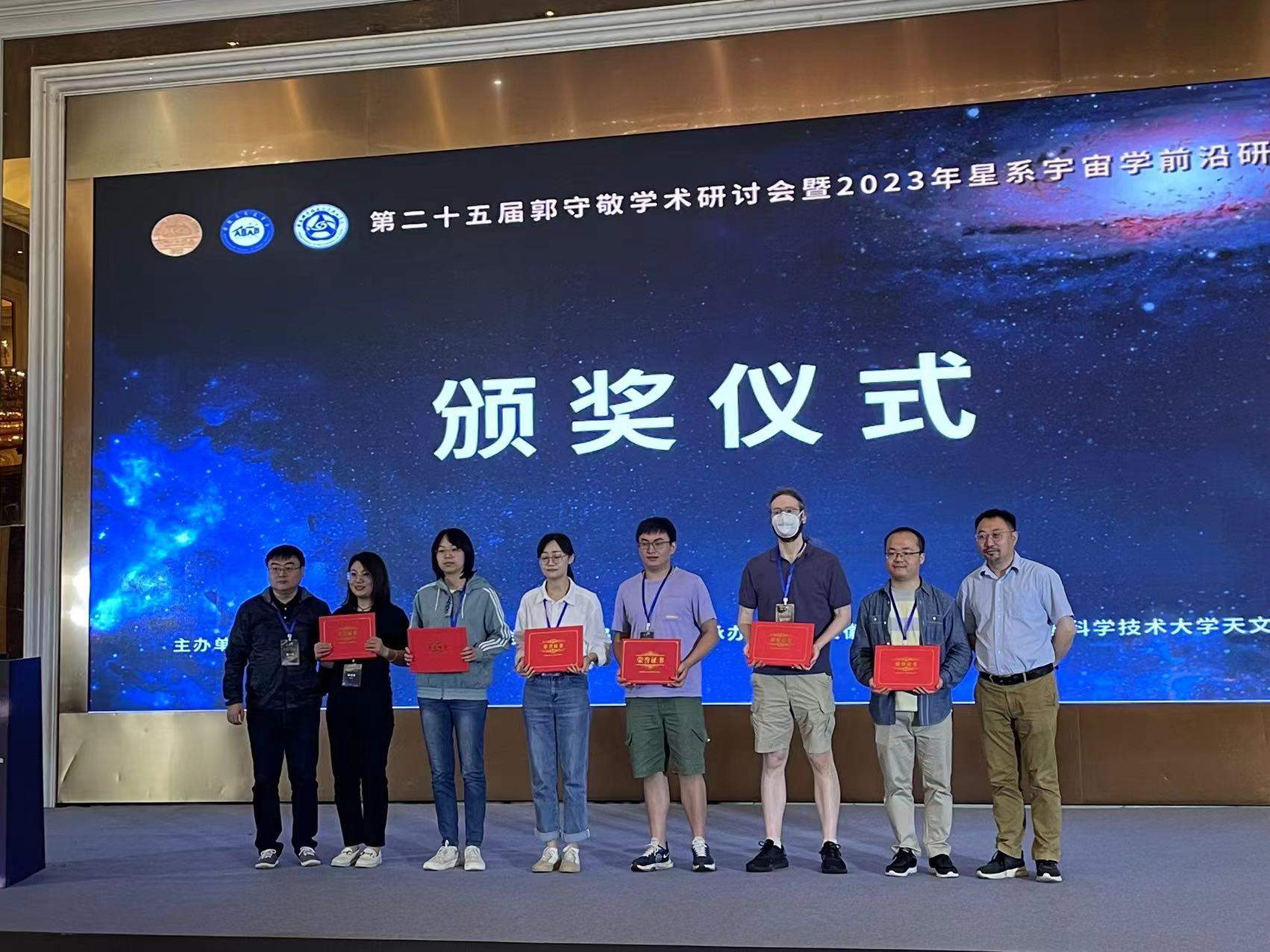Dr. Kai Wang and five other presenters from other institutes were selected for best oral presentations at the 25th Chinese Astronomical Society Guoshoujing Symposium on Galaxies and Cosmology. This conference, held in Huangshan, China, from 19 to 22 May 2023, is one of the largest astronomical meetings in China, with more than 500 participants, 100 oral presentations, and 70 posters.

The group photo for the 25th Chinese Astronomical Society Guoshoujing Symposium on Galaxies and Cosmology
Dr. Wang’s presentation, entitled “Central galaxy quenching and its relation to halo formation time and large-scale environments”, introduced recent findings about the secondary effects of central galaxy quenching based on the Sloan Digital Sky Survey data. In the first result, at a given halo mass, central galaxies in late-formed halos are more quenched, which challenges the traditional opinion that central galaxies in early-formed halos should be more quenched. In a second result, Dr. Wang described the quenching of central galaxies has a statistically significant dependence on their large-scale environments. The so-called backsplash galaxies, which are central galaxies at the observation time but were satellite galaxies previously, are responsible for the signal of low-mass galaxies. This population of galaxies can also explain the two-halo galactic conformity effect, which is the correlation in the star-formation states between central galaxies and their neighboring galaxies up to several megaparsecs, found ten years ago. The environmental dependence for massive central galaxies is due to the environment-differentiated merger rates and subsequent black hole growth and AGN feedback.

The awards ceremony for the best oral presentations. The second from the right: Dr. Kai Wang.
Dr. Wang has been a postdoc (KIAA fellow) at KIAA at Peking University since Jul. 2022. The research group led by Prof. Yingjie Peng is dedicated to studying the galaxy formation and evolution process, as well as its relation to large-scale structures, from both observational and theoretical perspectives. This presentation is based on two published projects (arXiv:2304.06886 and 2304.07189) that were initiated after he joined Prof. Yingjie Peng’s research group last year.